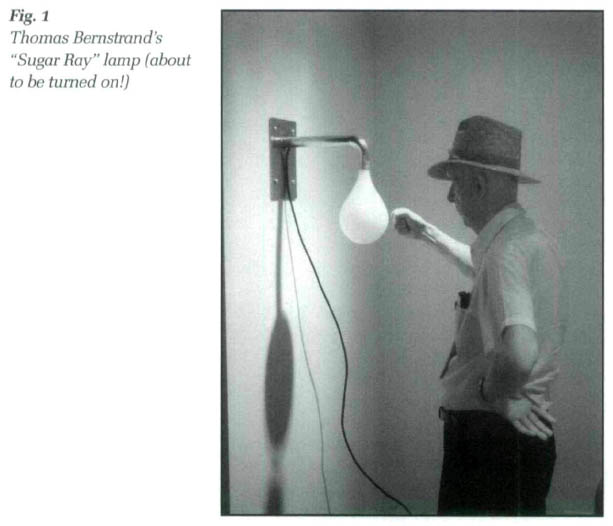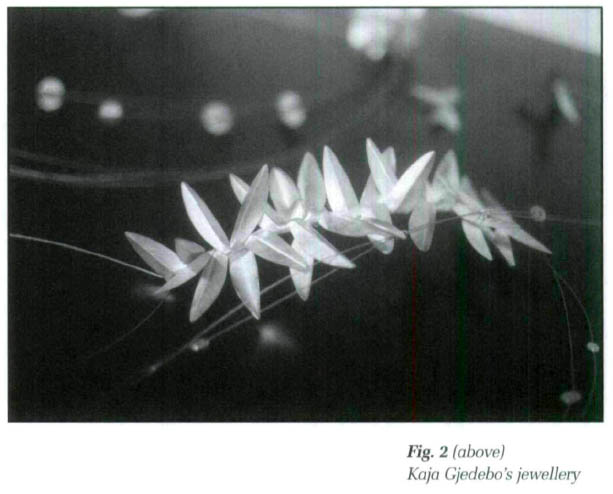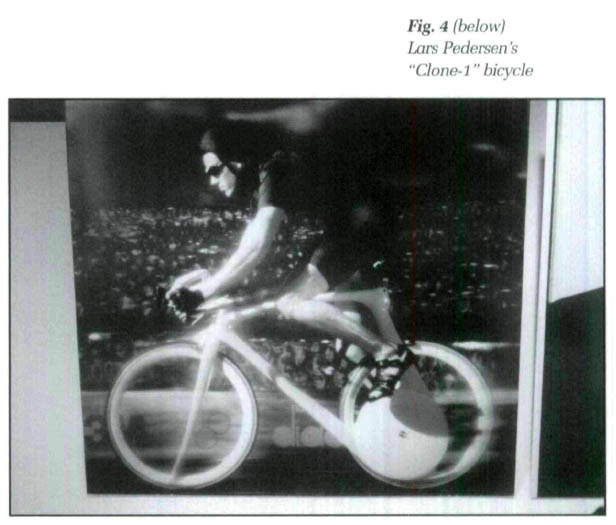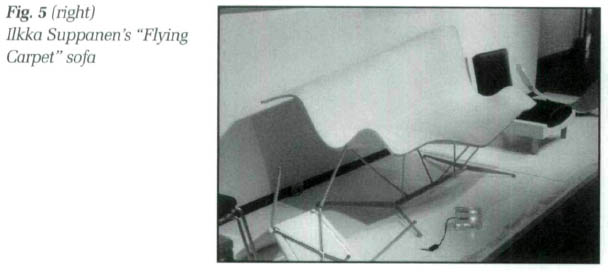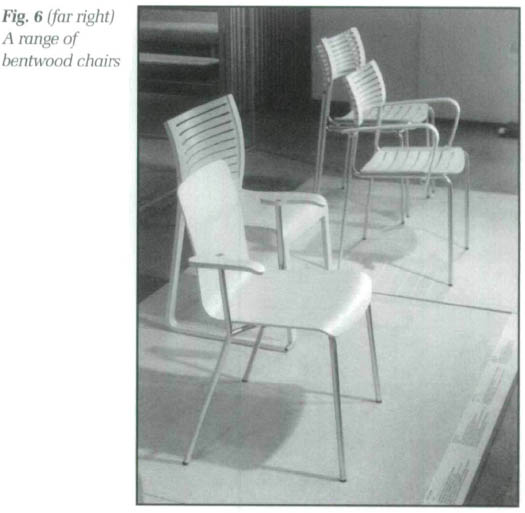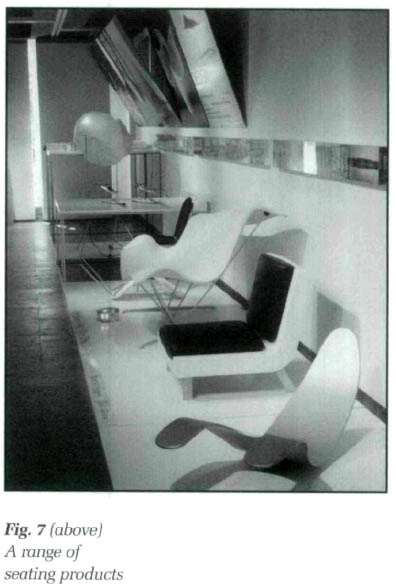Exhibit Reviews / Comptes rendus d'expositions
Young Nordic Design: Generation X
- An Exhibition of Design from Denmark, Finland, Iceland, Norway and Sweden
Sponsor: Design Forum Finland — The Finnish Society of Crafts and Design Venue: City Hall Gallery, Ottawa City Hall
Curator: Anne Stenros, D.Tech., Managing Director, Design Forum Finland
Designer: Design Forum Finland
Duration: 10 July to 20 August 2002
Tour schedule: New York, Washington, Mexico City, Helsinki, Berlin, Montreal, Vancouver, Ottawa, Glasgow, Reykjavik
Accompanying publication: Young Nordic Design — Generation X (booklet)
1 This much-traveled exhibition has already attracted considerable interest since its launch in October 2000. New York, Washington, Mexico City, Helsinki, Berlin, Montreal and Vancouver have all cast their critical eyes on the wide range of selected design work of some thirty-five young Nordic designers. From 10 July to 20 August 2002, the exhibition came to the City Hall Art Gallery in the Ottawa City Hall, before its subsequent stops in Glasgow and Reykjavik. This review is based on a visit to the exhibition on its last day in Ottawa.
2 The visitor's book had been well visited, and contained numerous positive comments that often made reference to "IKEA;" either making comparisons, seeing similarities, or simply wishing that many of the items on show could be found in the local IKEA store. Perhaps some of them will. The exhibition carried little mention of the marketing of the products, however, it is a testament to the immediacy of the work in display that so many thought that so much of it could find happy homes in Ottawa. Ottawa, a northern city too, but seemingly with little in common with its Nordic counterparts and their distinct cultural heritage.
3 On that last day, the exhibition was in good order. Though there were numerous signs requesting not to touch, design exhibitions are usually so tempting that some "wear and tear" is common. There was little damage in evidence. The "Glow-blow" lamp of Vesa Hinkola, Markus Nevalainen and Rane Vaskivuori was still slowly inflating and deflating, Sanna Hansson's FIVEFOOTELEVEN [5'11"] mirror was unscathed, and all the many chairs seemed strong and new. Clearly the Nordic traditional values of functionality and good use of materials had not been lost in this Generation X group of designers.
4 It is almost fifty years since the "Design in Scandinavia" exhibition toured some twenty-four North American cities to be seen by almost one million visitors. Just a few years after the Second World War, the work of Alvar Aalto, Arne Jacobsen and Tapio Wirkkala was establishing a reputation for Nordic and Scandinavian design that would remain for the next fifty years and counting. During that period of growth and recovery for much of the developed world, through their love and respect of natural materials and craftsmanship, they offered timeless and unpretentious products for everyday use. At the time of writing, an exhibition celebrating one hundred years of Arne Jacobsen's (1902-1971) work is touring Canada — all of it still attractive, and much of it still available in the market, though at prices a little higher than those found in IKEA. The question on the mind of anyone who had experienced that previous Scandinavian invasion would concern how much had changed and could expect to change in modern Nordic design, and its Generation X.
5 Design exhibitions usually display work in isolation from their living environments. This exhibit was no different, but large photographs of bicycles, textiles and clothing alongside spectacular and peaceful Nordic panoramas showed the ever-present importance of people and a respect for the sensibilities and sensitivities of the user. Though the temporary nature of fashion all too often dominates a review of design work, this exhibition offered perhaps its greatest charm by way of its consideration for natural evolution.
6 Designers and craftsmen have, historically, offered ways to understand and use materials, developed processes to enable the mass production of more visually appealing and stimulating objects, and found ways to help more and more people acquire more well made products as necessities. The Bauhaus and the Werkbund in Germany, and the Arts and Crafts movement in England, played a large part in this, and the reputation established in the 1950s for Nordic design was part of this continuum. But once timelessness and respect for natural materials have been established, what is left for the young designers of Generation X?
7 The exhibition contained about fifty selected works from all five Nordic countries. Clearly the Scandinavian traditions have spread, and the differing nationalities seemed indistinguishable from each other. Stainless steel barbecue tools, wooden chairs, jewellery, clothing, and glass works all displayed the simplicity, care and respect for materials we would expect. Nothing has been lost, and yet the evolution has continued. Plastics in all manner of containers, composites explored in Lars Pedersen's unique "Clone-1" bicycle, rubber in Tinna Gunnarsdottir's place mats, three-dimensional laminated silk textiles from Thea Blerg, and many non-traditional material applications were all on display. New materials, but with the same respect of former years. Many of the products were successfully simple and functional, but perhaps the most refreshing aspect of design evolution on display was the wit.
8 Design "wit" can range from the quick fed to the subtlety and charm of formal juxtaposition. This work showed such a range; a lamp in an ice cube from Harri Koskinen, that slowly inflating lamp, Ilkka Suppanen's "Flying Carpet" sofa, Thomas Bernstrand's "Sugar Ray" punch bag lamp, Maria Bemtsen's "Big Apple" shaped fruit tray. Nordic Design has moved on. The world of today is more transient. Values are more global in the developed nations. New materials have reached a maturity and respect, and good design is no longer the domain of the wealthy who made Alvar Aalto and Arne Jacobsen the giants on whose shoulders these young designers now stand.
9 When Anne Stenros, Director of Design Forum Finland, organized this exhibition in co-ordination with the Design Councils of Denmark, Iceland, Norway and Sweden, from a range of work by their native designers in their twenties and thirties, she was fully aware of its potential impact. From strong basic: principles, good design is able to evolve to consider, with respect, new challenges. Fine wooden chairs can still naturally evolve. Lighting, though functional, can be more than just a temporal piece of sculpture. Our homes can display our personalities, can make us laugh, or simply make us comfortable. The products emanating from this exhibition do just that, but without losing the values so hard fought by their design ancestors.
